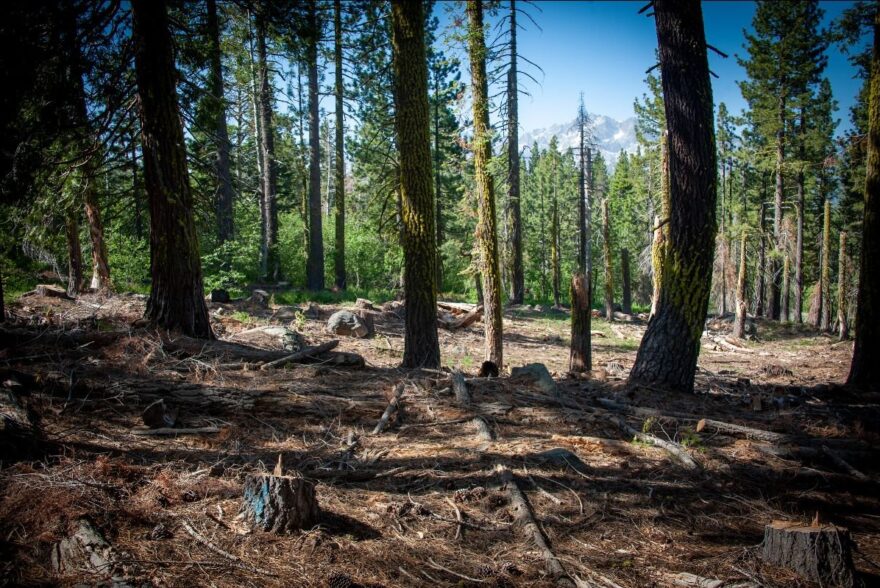Aug. 2020 Science Corner | “Evapotranspiration Mapping for Forest Management in California’s Sierra Nevada”


Forest restoration actions, like mechanical thinning and prescribed burning, are essential to bringing these landscapes closer to their historical conditions. These activities, along with wildfires, can also increase water yield as trees are removed from the forest.
Authors: James W. Roche, Qin Ma, Joseph Rungee, Roger C. Bales
Interview and story by: Kim Seipp
Dry western forests of today look dramatically different than those of the 19th Century, with substantially higher tree density due to legacy management practices like fire exclusion. An overstocked forest not only leads to increased risk of severe wildfire because of increased fuel loads but also decreased drought resilience as more trees need more water to survive. Forest restoration actions, like mechanical thinning and prescribed burning, are essential to bringing these landscapes closer to their historical conditions. These activities, along with wildfires, can also increase water yield as trees are removed from the forest.
Quantifying ecosystem services outcomes, for example, how much additional water is released as a result of a disturbance, whether a management action or a wildfire, however, is challenging. A recent study led by Dr. Jim Roche, a resource manager with the National Park Service, with his colleagues at the Sierra Nevada Research Institute, profiled above, aims to close that knowledge gap. The team used remote sensing tools and modern computing resources like Google Earth Engine to understand how disturbances, in this case wildfires, impacted changes in forest water use over a 30-year period from 1985-2015. They tested their approach in the Yuba and American River watersheds in the northern Sierra Nevada.
The researchers found considerable additional water yield when 25-75% of the landscape was burned, which is the equivalent of what would be needed to get many forests back to their historic state. However, even for every 25% reduction in forest vegetation, the authors found vegetation needed one to four inches less water per year from precipitation or water in the soil. Pointing to the fact that a healthier forest can provide co-benefits such as reducing drought induced tree mortality, reducing damaging wildfire risk, and protecting water resources.
Dr. Roche pointed out that this work can be useful for forest investment, including Forest Resilience Bond projects. “If people are going to invest in forest management, they will want to see the potential outcomes of the work,” he said. Co-benefits of forest restoration, like water supply, can motivate non-traditional stakeholders like water utilities to participate in the work, but they need to be able to monitor the outcomes.
He emphasized that one of the next steps is to include climate change in disturbance analyses to understand how various management practices will impact the long term resilience of the forest.
“We are really at the starting point of understanding forest management actions on a landscape scale,” said Dr. Roche.
Blue Forest supported this research through a USDA NIFA Small Business Innovation Research program grant, and we look forward to a continued research collaboration on the multiple benefits of forest restoration.